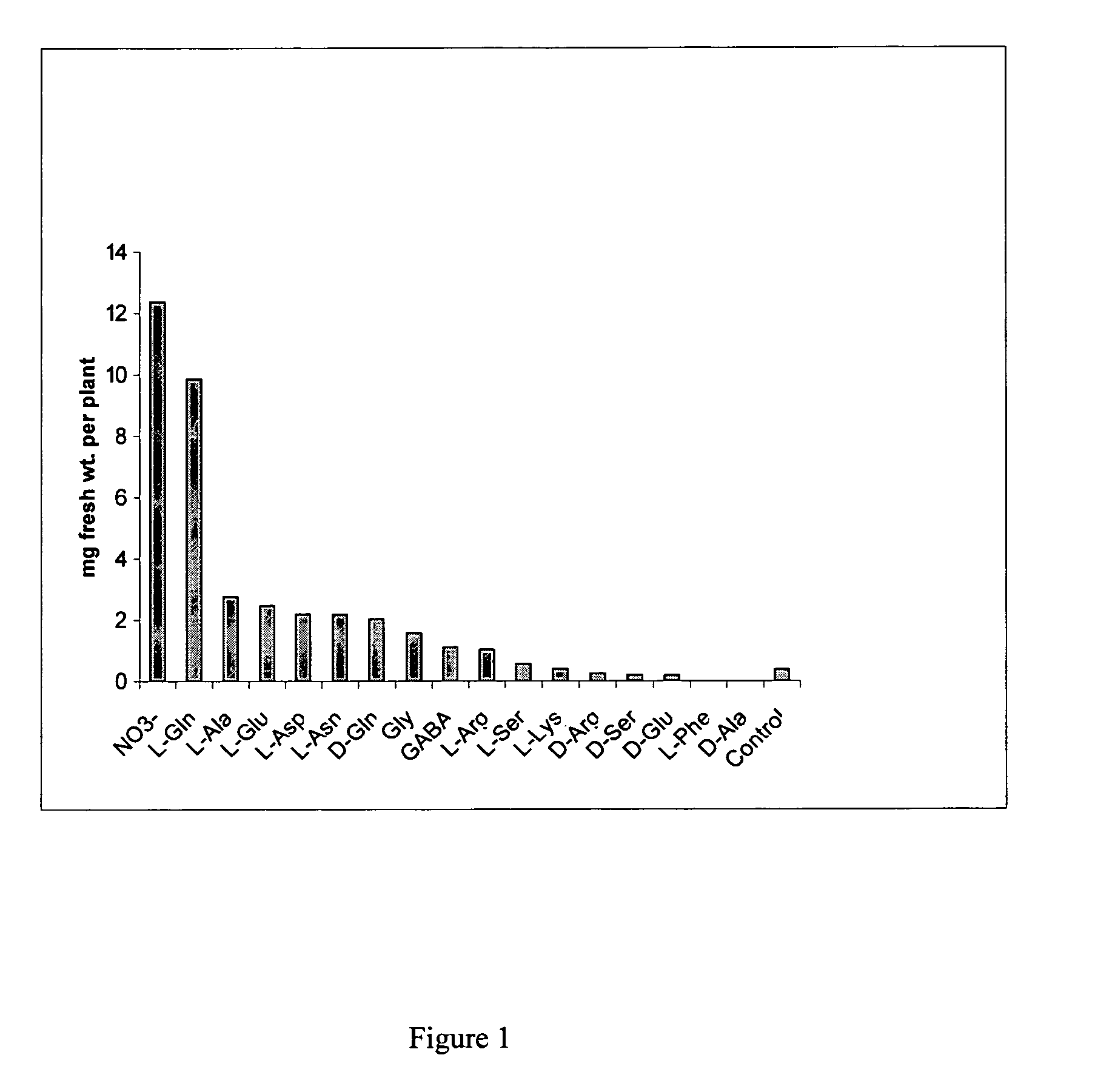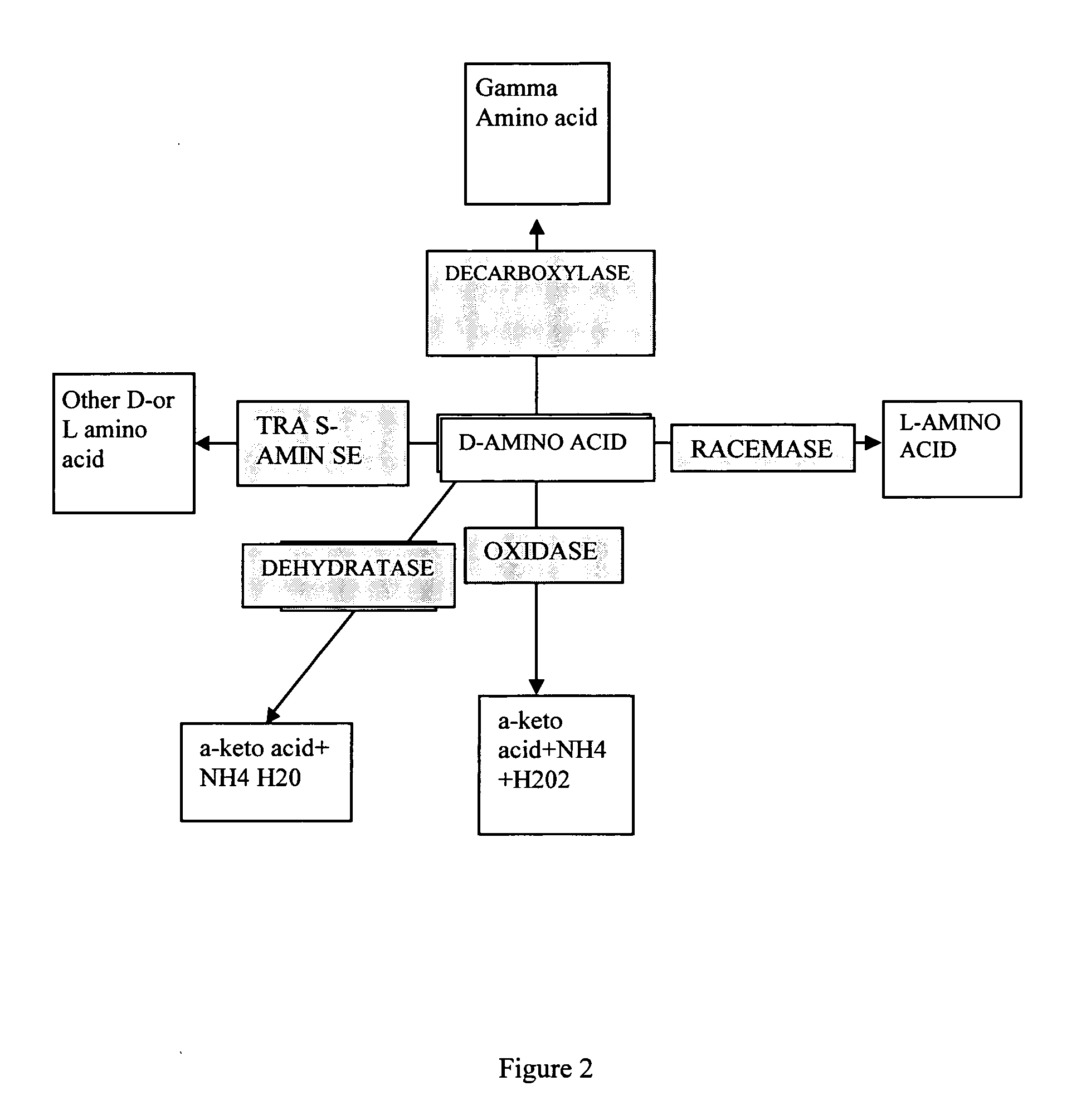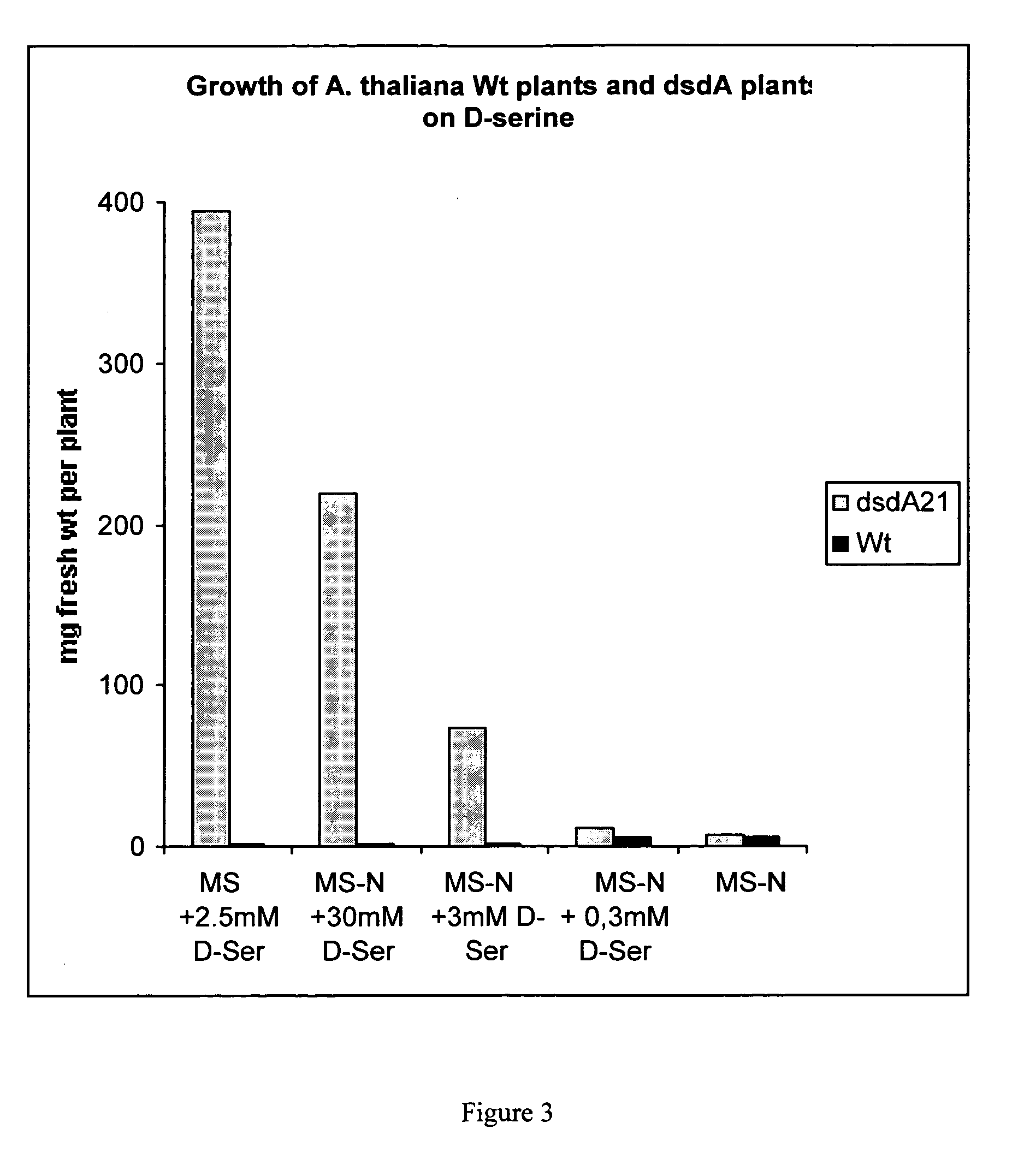Selective plant growth using D-amino acids
a technology of d-amino acids and plant cells, applied in the field of plant cell selection, can solve the problems of limited plant growth, especially in agriculture, and achieve the effect of reducing the number of dead cells
- Summary
- Abstract
- Description
- Claims
- Application Information
AI Technical Summary
Benefits of technology
Problems solved by technology
Method used
Image
Examples
Embodiment Construction
[0016] Generally, only a single D-amino acid metabolising enzyme is needed to convert the D-amino acid into compounds that can participate in the usual plant pathways of nitrogen metabolism (i.e. compounds which are non-dextrorotatory). For example, the enzyme D-serine dehydratase may be used to convert D-serine into ammonia, pyruvate and water and D-amino acid oxidases may be used to convert D-amino acids into ammonia, a keto acid (depending on the D-amino acid substrate) and hydrogen peroxide. Nitrogen that is otherwise inaccessibly bound in D-amino acids can thus be converted enzymatically into forms that can be readily utilised by the plant.
[0017] One aspect of the present invention provides an isolated nucleic acid comprising a sequence encoding a polypeptide which has D-amino acid metabolising activity, the sequence being operably linked to one or more plant specific regulatory elements.
[0018] In some embodiments of the invention, an isolated nucleic acid may consist of a se...
PUM
| Property | Measurement | Unit |
|---|---|---|
| composition | aaaaa | aaaaa |
| stress tolerance | aaaaa | aaaaa |
| concentrations | aaaaa | aaaaa |
Abstract
Description
Claims
Application Information
 Login to View More
Login to View More - R&D
- Intellectual Property
- Life Sciences
- Materials
- Tech Scout
- Unparalleled Data Quality
- Higher Quality Content
- 60% Fewer Hallucinations
Browse by: Latest US Patents, China's latest patents, Technical Efficacy Thesaurus, Application Domain, Technology Topic, Popular Technical Reports.
© 2025 PatSnap. All rights reserved.Legal|Privacy policy|Modern Slavery Act Transparency Statement|Sitemap|About US| Contact US: help@patsnap.com



